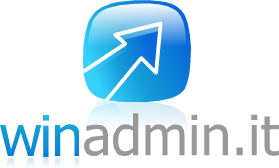Sommario:
Tutorial: Hello World in Objective-C
Objective-C is a general-purpose, object-oriented programming language that was created as a strict superset of the C programming language by Brad Cox and Tom Love in 1983. It was originally developed for use in the NeXTSTEP operating system and is now primarily used for developing software for Apple’s macOS, iOS, iPadOS, tvOS, and watchOS operating systems.
Objective-C is a relatively easy language to learn, especially for those who have experience with other object-oriented programming languages such as Java or C++. In this tutorial, we will create a simple “Hello World” program in Objective-C.
Prerequisites
Before you begin this tutorial, you will need the following:
* A Mac computer running macOS 10.15 or later
* Xcode 13 or later
* A basic understanding of the C programming language
Creating a New Xcode Project
1. Open Xcode and click on the “Create a new Xcode project” button.
2. In the “Project template” section, select the “macOS” tab and then select the “Command-Line Tool” template.
3. Enter a name for your project (e.g., “HelloWorld”) and click on the “Next” button.
4. Select a location for your project and click on the “Create” button.
Writing the “Hello World” Program
1. In Xcode, open the “main.m” file. This is the main source file for your project.
2. Replace the existing code with the following code:
objective-c
#import <Foundation/Foundation.h>
int main(int argc, const char * argv[]) {
@autoreleasepool {
NSLog(@"Hello, world!");
}
return 0;
}
Breaking Down the Code
Let’s break down the code step by step:
* #import
int main(int argc, const char * argv[])**: This is the entry point of the program. It takes two arguments: **argc**, which is the number of command-line arguments, and *argv, which is an array of strings containing the command-line arguments.
* @autoreleasepool: This is an Objective-C block that automatically manages memory for any objects created within the block.
* NSLog(@”Hello, world!”);: This line uses the NSLog() function to print a message to the console.
* return 0;: This line returns 0 from the main() function, indicating that the program has run successfully.
Building and Running the Program
1. Click on the “Build” button in Xcode (or press Cmd+B).
2. If the build is successful, click on the “Run” button (or press Cmd+R) to run the program.
You should see the following output in the console:
Hello, world!
Conclusion
In this tutorial, we created a simple “Hello World” program in Objective-C. We learned how to import frameworks, write a basic Objective-C program, and build and run the program using Xcode. This tutorial is just a starting point, and there is much more to learn about Objective-C. We encourage you to explore the language further and build more complex programs.
FAQs
1. What is the difference between Objective-C and C++?
Objective-C is a strict superset of C++, meaning that all valid C++ code is also valid Objective-C code. However, Objective-C adds several new features to C++, including object-oriented programming, dynamic messaging, and garbage collection.
2. Is Objective-C a good language to learn?
Yes, Objective-C is a good language to learn, especially for those who want to develop software for Apple’s platforms. It is a relatively easy language to learn, and it provides a powerful set of features for developing object-oriented software.
3. What are some of the most popular frameworks for Objective-C?
Some of the most popular frameworks for Objective-C include Foundation, UIKit, and Core Data. Foundation provides a wide range of functionality for working with data types, collections, and other common programming tasks. UIKit is a framework for developing graphical user interfaces for iOS and macOS applications. Core Data is a framework for working with data in a persistent manner.
4. What are the job prospects for Objective-C developers?
The job prospects for Objective-C developers are generally good. There is a high demand for Objective-C developers who are skilled in developing software for Apple’s platforms.
5. Can I use Objective-C to develop software for other platforms?
Yes, it is possible to use Objective-C to develop software for other platforms, such as Linux and Windows. However, Objective-C is primarily used for developing software for Apple’s platforms.
6. What are some of the resources that I can use to learn more about Objective-C?
There are many resources available for learning Objective-C, including books, online tutorials, and online courses. Some of the most popular resources include the Apple Developer Documentation, the Stanford University CS193p course, and the Udacity iOS Developer Nanodegree program.
7. What are the benefits of using Objective-C?
Objective-C provides several benefits over other programming languages, including:
* Object-oriented programming: Objective-C is a fully object-oriented language, which makes it easy to develop complex software systems.
* Dynamic messaging: Objective-C uses dynamic messaging, which allows objects to send messages to each other without knowing the specific class of the receiver. This makes it easy to develop flexible and extensible software.
* Garbage collection: Objective-C uses garbage collection to automatically manage memory, which makes it easy to avoid memory leaks and other common memory management problems.
8. What are some of the challenges of learning Objective-C?
One of the challenges of learning Objective-C is that it is a relatively complex language. It can be difficult to understand all of the features of the language, especially for those who are new to object-oriented programming.
Another challenge is that Objective-C is closely tied to the Apple development environment. This means that it can be difficult to use Objective-C to develop software for other platforms.
